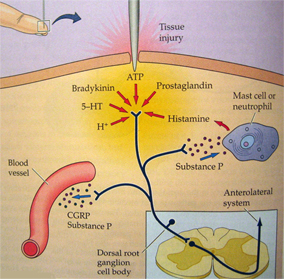Acute pain nursing diagnosis involves various stages of assessment and intervention. But before going through that we must understand what pain is.
Background
As defined by The International Association for the Study of Pain defined pain as “an unpleasant, sensitive, subjective, sensory and emotional experience associated with actual or potential tissue damage or described in terms of such damage”. Pain is a subjective issue and involves a variety of complex mechanisms with physical, emotional, and cognitive components. Pain alters the quality of life more than any other health related problem. It affects sleep, thinking, nutrition and sexual activity of a person. Even though pain is such an obstruction to comfort, it is one of the least understood and most under rated and under treated problems of healthcare provider and their clients.
Since ancient times, pain was considered a physical affair related to an injury or illness. And since time immemorial, nurses are have been given the role to alleviate pain. But there has been no or little understanding of the complexity of pain and even more limited methods to relieve them. Recent study shows pain has distinct physical and emotional component. Thus there is a need to broaden the viewpoint on assessment and intervention in acute pain nursing diagnosis.

Acute Pain
Assessment
First, there is need to assess the quality (sharp burning, shooting, etc), severity, location and duration of the pain. Monitor heart rate, BP, temperature, color and moisture of skin and other symptoms associated with pain. Assess the probable reason behind the pain. Different etiological factors respond better to different therapies. Evaluate patient’s preference for the various pain relief strategies that are available. If the patient is given some kind of measure to alleviate or regulate the pain, assess the patient’s reactions to those measures. Anomalies between behavior or appearance and what the patient says about pain relief shows other methods that the patient might be using to cope up with pain itself.
Another important thing is to evaluate what pain means to individual patients and what are their expectations for pain relief. Some patients might be happy with pain reduction but others will want the complete elimination of it. Nurses should not stereotype any patient’s response but treat each one uniquely.
Interventions and diagnosis
The very first thing that should be kept in mind is anticipation is the most important thing for pain relief. Early intervention may alleviate prolonged pain or reduce the need for analgesic required. Respond immediately to any complaint of pain and eliminate additional stressors or sources of discomfort. Give them enough time and space to rest. Pain may result in fatigue which in turn might exaggerate pain. This is a vicious cycle. A quiet and dark room environment and a disconnected phone are all measures geared towards facilitating rest. The most important thing is to determine the way to relieve the pain.
Some non pharmacological methods to treat pain include:
- Use of mental imagery to distract oneself from the painful stimuli of pain.
- Distraction exercises to increase one’s concentration towards non painful things. There are several breathing techniques to achieve distraction.
- Relaxation exercises can be used to bring about a state of physical and mental tranquility. One very helpful method can be music therapy.
Massage of affected areas can help reduce tensions in the muscles of the affected region. Hot and cold moist compresses have a very penetrating effect. The warmth makes the blood rush to the affected area and that promotes healing. Notify physician immediately in case the interventions are not working. Reassure the patient from time to time that pain is a time related phenomena and there are more than one way to deal with it. These are the few things to be kept in mind for acute pain nursing diagnosis.